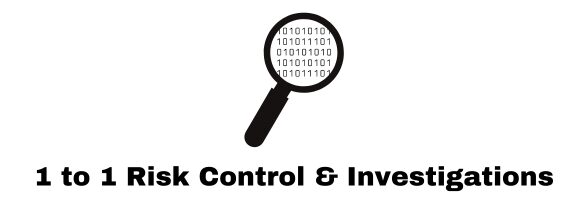405-458-5710
Confidentiality Guaranteed
405-458-5710
Confidentiality Guaranteed
You are Reading:
-
1 to 1 Risk Control & Investigations > Blog > Misinformation > Detecting Intentional Misinformation

Jul
Detecting Intentional Misinformation
In today’s digital age, misinformation spreads rapidly across social media, news outlets, and other online platforms. Detecting intentional misinformation is crucial for everyone who wants to stay informed and avoid being misled. This guide outlines strategies and techniques for identifying and addressing intentional misinformation.
Understanding Misinformation: Misinformation refers to false or misleading information spread with or without the intent to deceive. Intentional misinformation, often termed disinformation, is deliberately created and shared to mislead, manipulate, or cause harm. Recognizing the motives behind intentional misinformation is essential in developing effective detection strategies.
Analyze the Source: One of the first steps in detecting misinformation is to analyze the source of the information. Reliable sources typically have a history of accurate reporting and transparency. Check the credibility of the source by researching its background, examining its history, and looking for signs of bias or agenda. Be wary of sources that lack transparency or have a track record of spreading false information.
Check for Evidence: Authentic information is usually supported by verifiable evidence. Look for credible references, data, and sources that back up the claims made in the information. If the information lacks evidence or relies on anonymous sources without verification, it is likely to be misinformation. Fact-checking websites and tools can also help verify the accuracy of information.
Evaluate the Language: The language used in misinformation often includes sensationalism, emotional appeals, and biased language. Be cautious of information that uses exaggerated claims, inflammatory language, or appeals to fear or anger. Objective and balanced reporting tends to use neutral language and presents multiple perspectives.
Consider the Context: Misinformation often takes information out of context to mislead the audience. Analyze the broader context in which the information is presented. Look for additional information that provides a complete picture and consider how the information fits within the larger narrative. Misleading information may omit crucial details or present isolated facts without context.
Verify Visual Content: Visual content, such as images and videos, can be manipulated or misrepresented to spread misinformation. Use reverse image search tools to check the authenticity of images and verify their origins. For videos, look for signs of editing or manipulation. Cross-check visual content with reliable sources to ensure its accuracy.
Monitor Social Media Trends: Social media platforms are common channels for spreading misinformation. Monitor social media trends and analyze how information spreads across different platforms. Use social media monitoring tools to track hashtags, keywords, and user interactions. Identify patterns of misinformation and the accounts or groups responsible for its dissemination.
Collaborate with Fact-Checking Organizations: Fact-checking organizations play a crucial role in verifying information and debunking misinformation. Collaborate with reputable fact-checking organizations to access their resources and expertise. Share findings with these organizations and contribute to a broader effort to combat misinformation.
Educate and Raise Awareness: Educating yourself and others about misinformation is essential in building resilience against false information. Provide training on how to identify misinformation and promote critical thinking skills. Raise awareness about the tactics used to spread misinformation and encourage skepticism of unverified information.
Implement Technological Solutions: Leverage technological solutions to detect and combat misinformation. Use artificial intelligence and machine learning algorithms to analyze patterns and identify potential misinformation. Implement tools that can flag suspicious content and alert users to verify information before sharing. Technology can enhance the efficiency and accuracy of misinformation detection efforts.
Develop a Response Plan: Having a response plan in place is crucial for addressing misinformation effectively. Establish protocols for verifying information, responding to misinformation, and communicating with others. Designate a team responsible for managing misinformation incidents and ensure they are trained to handle such situations promptly and professionally.
Build Trust with Transparency: Building trust with your audience is essential in countering misinformation. Be transparent about your sources, methods, and decision-making processes. Provide clear and accurate information and correct any mistakes promptly. Building a reputation for reliability and transparency can help mitigate the impact of misinformation.
Stay Informed: The landscape of misinformation is constantly evolving, with new tactics and technologies emerging. Stay informed about the latest trends, tools, and strategies in misinformation detection and prevention. Continuously update your knowledge and adapt your approaches to stay ahead of misinformation threats.
Detecting intentional misinformation is a critical task for everyone. By understanding the nature of misinformation, analyzing sources, verifying evidence, and leveraging technological solutions, individuals can protect themselves and others from the harmful effects of false information. Education, transparency, and collaboration are key components in building resilience against misinformation and ensuring the integrity of information.
- AI
- Bug Sweeps
- Car Security
- Cyber Crime
- Cyber-Stalking
- Digital Forensics
- Fraud
- Geo-Political
- GPS Tracking
- Hidden Cameras
- Identity Theft
- Investigations
- Misinformation
- Mobile Device Forensics
- Mobile Device Security
- Operational Security
- Privacy
- Psychology
- Situational Awareness
- Social Media Investigations
- Stalking
- Surveillance
- Uncategorized
